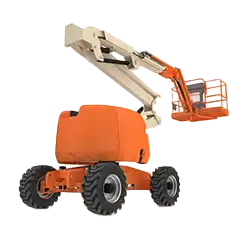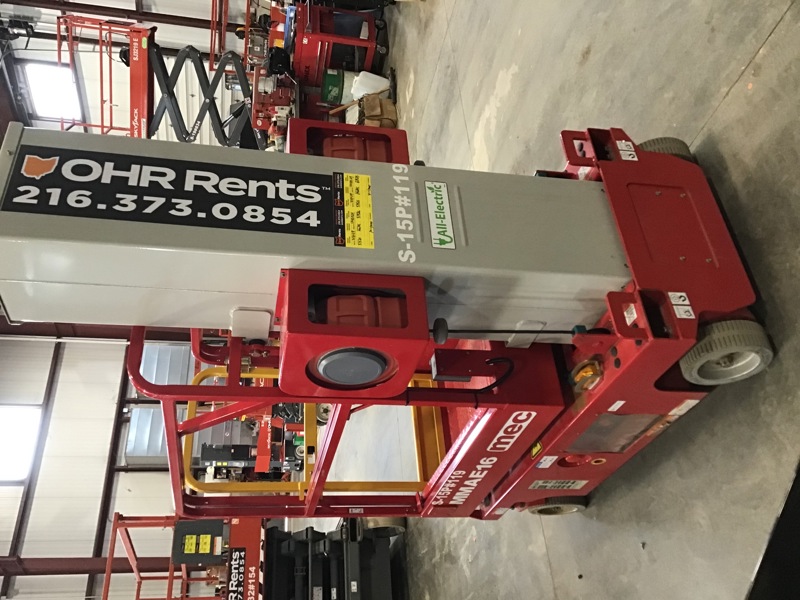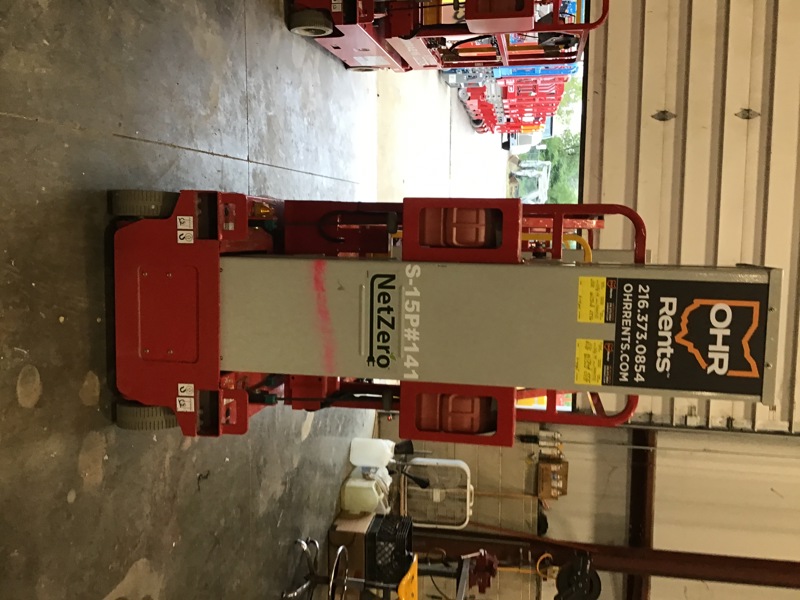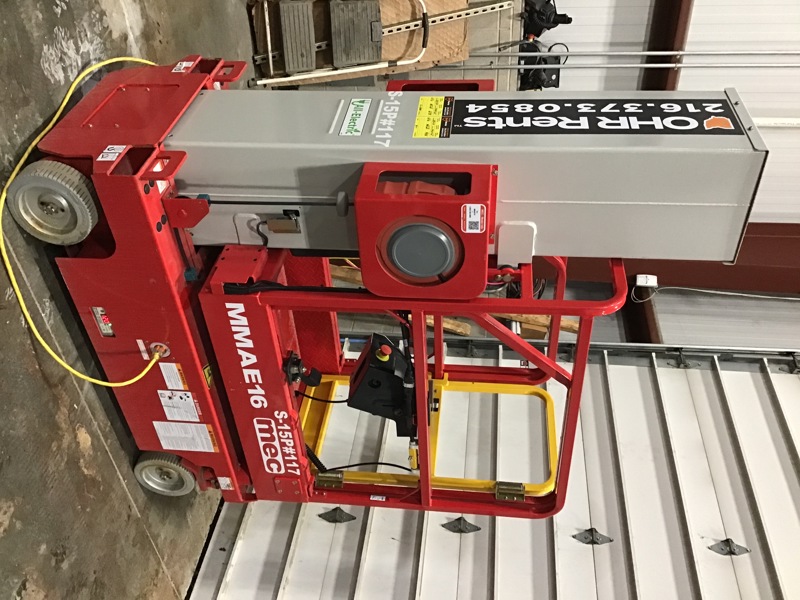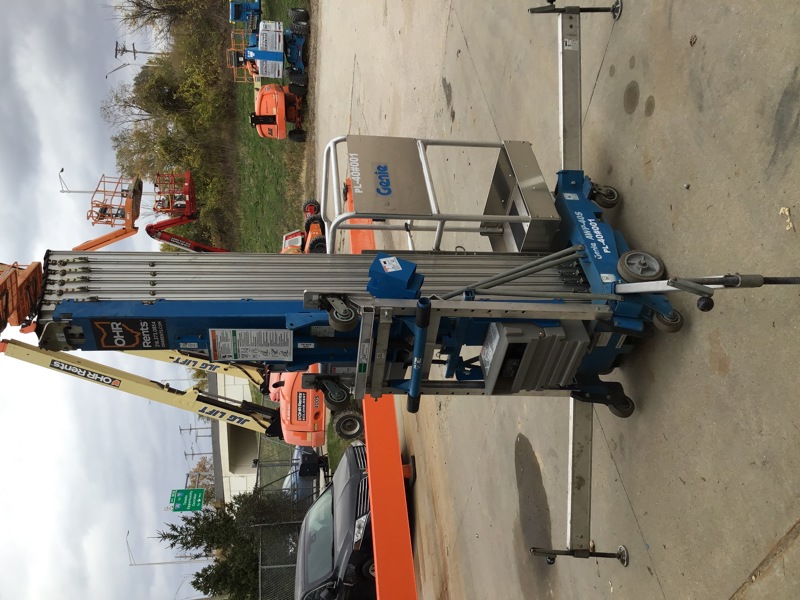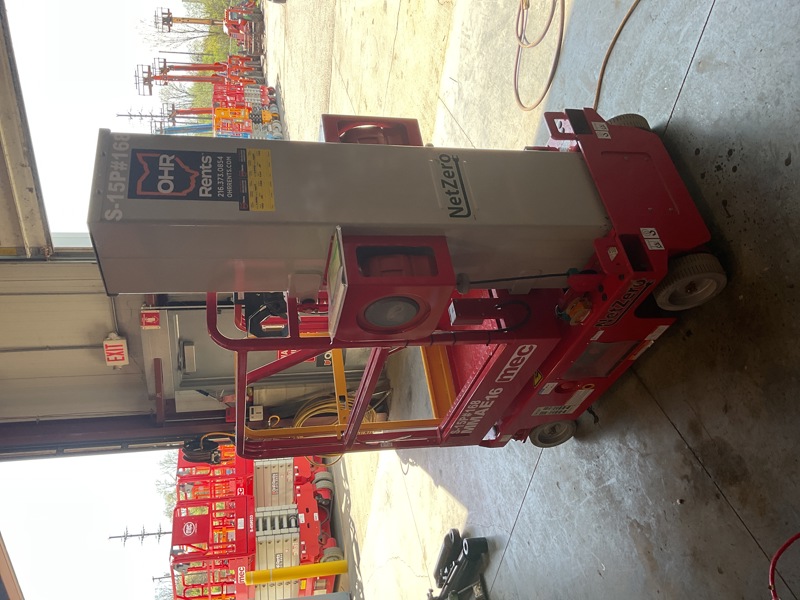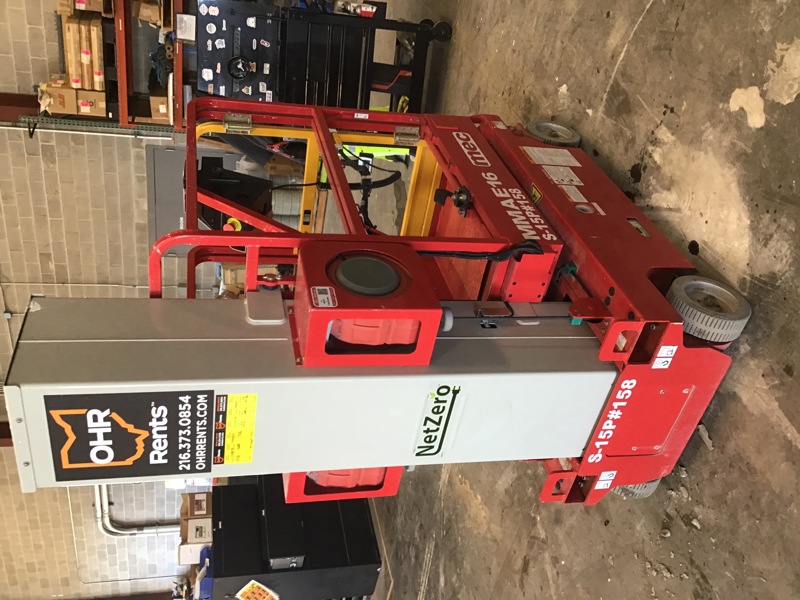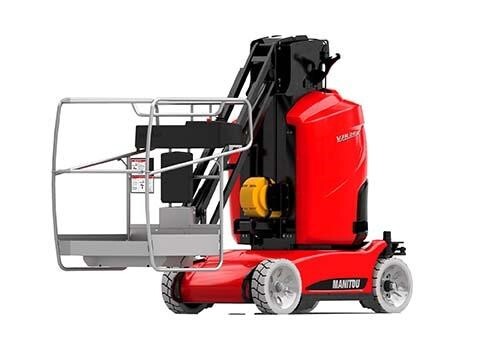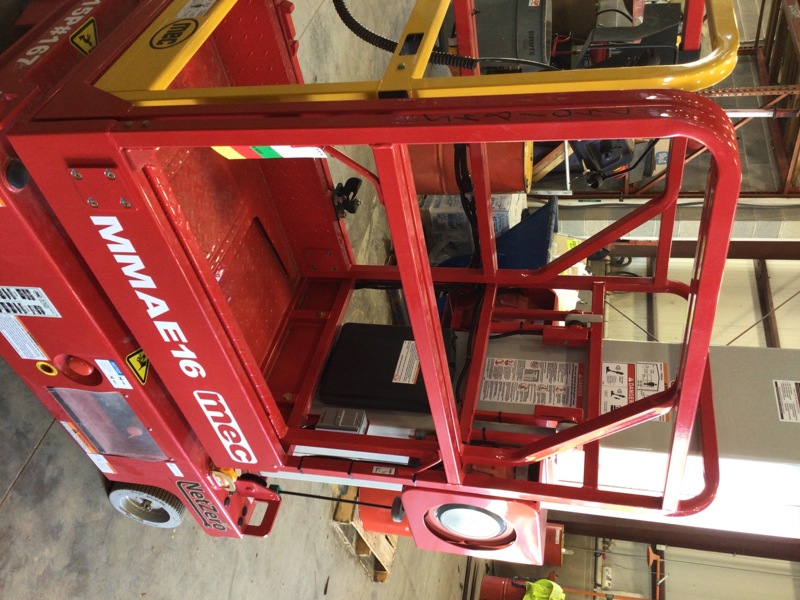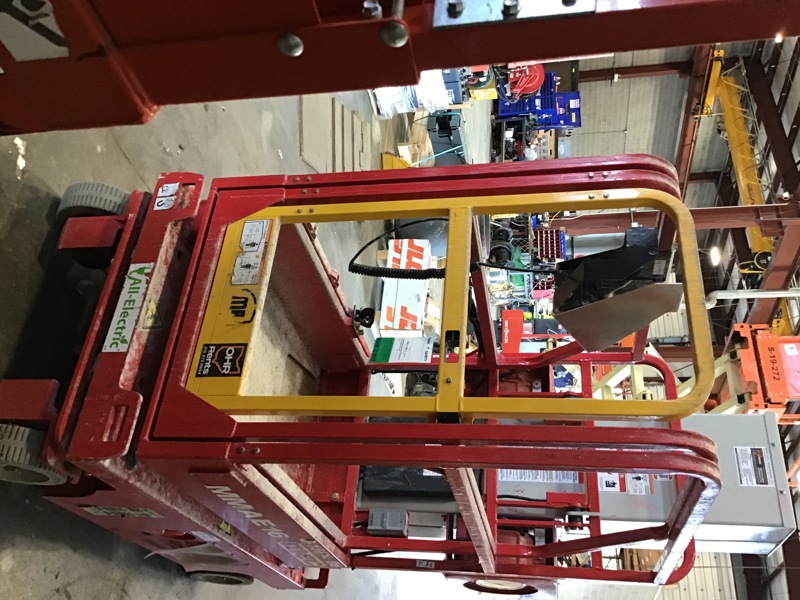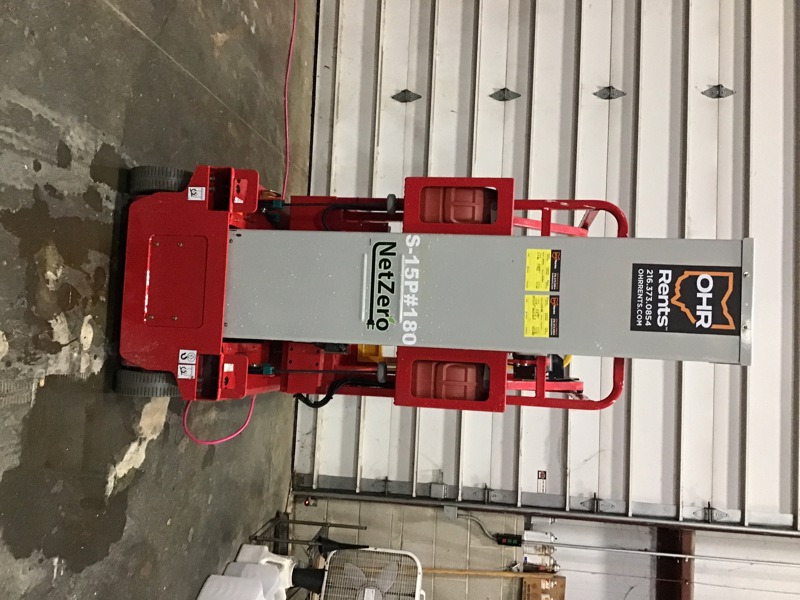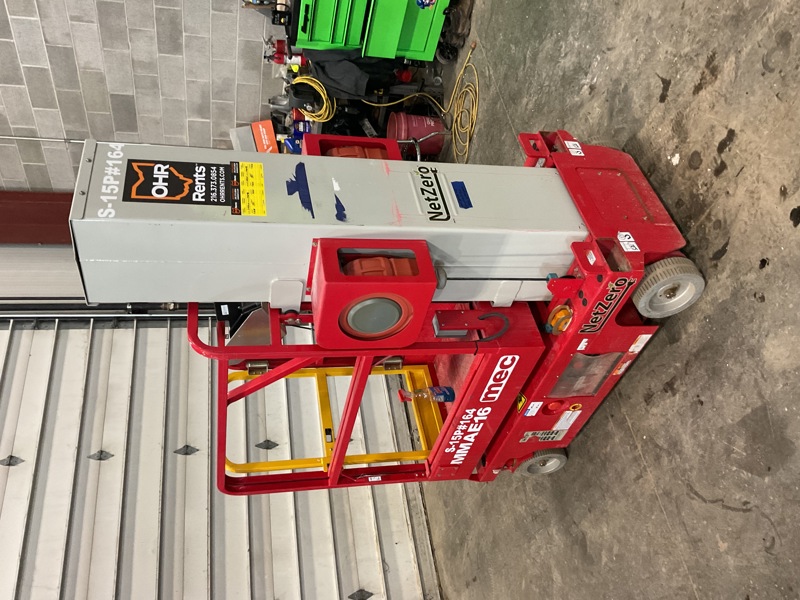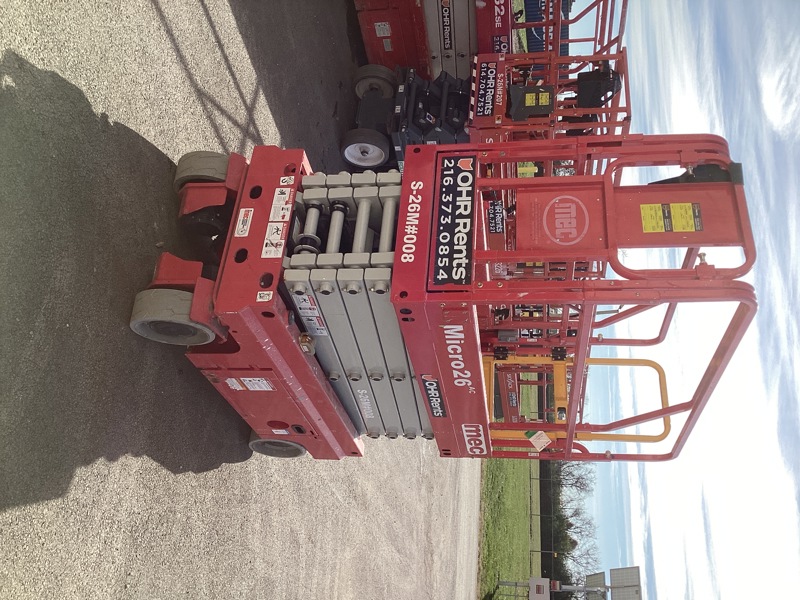Shop for Aerial Work Platforms for Sale on BuyFleetNow.com
Genie Aerial Work Platforms For Sale | JLG Aerial Work Platforms For Sale | MEC Aerial Work Platforms For Sale | Sinoboom Aerial Work Platforms For Sale | Skyjack Aerial Work Platforms for Sale
What Are the Different Types of Aerial Work Platforms?
Aerial work platforms (AWPs) come in various types, each designed for specific tasks and environments. Here are the main types of AWPs:
Scissor Lifts: Scissor lifts are characterized by their crisscrossing (scissor-like) lifting mechanism, which provides vertical lift. They are suitable for tasks that require straight up-and-down movement.
Boom Lifts: Boom lifts have extendable arms (booms) that provide both vertical and horizontal reach. They are versatile and can be used to access areas that are otherwise difficult to reach. Articulating Boom Lifts have jointed sections that allow the arm to bend, making them ideal for reaching over obstacles. Telescopic Boom Lifts have straight, extendable arms for long, direct reach.
Vertical Mast Lifts: Vertical mast lifts are compact and provide vertical movement via a single mast. They are typically used indoors where space is limited.
Personnel Lifts: Personnel lifts are smaller, portable lifts designed for one person. They are used for light tasks at lower heights.
Truck-Mounted Lifts: Truck-mounted lifts are boom lifts mounted on trucks. They provide mobility and can be driven to different locations easily.
Trailer-Mounted Lifts: Trailer-mounted lifts are similar to truck-mounted lifts but are mounted on trailers, allowing them to be towed by vehicles.
Rough Terrain Lifts: Rough terrain lifts are designed for use on uneven or rough surfaces. They often have larger tires and robust stabilization mechanisms.
What Are the Primary Uses of Aerial Work Platforms?
Aerial work platforms (AWPs) are primarily used for tasks that require safe and efficient access to elevated areas. They are essential in construction for tasks such as painting, window installation, and facade work. In maintenance and repairs, AWPs are used for electrical work, HVAC servicing, and building repairs. They also play a crucial role in warehousing for reaching high storage areas and in events and filming to set up lighting, cameras, and other equipment. The versatility and mobility of AWPs make them invaluable across various industries that need to perform work at heights.
How Much Does an Aerial Work Platform for Sale Cost?
The cost of an aerial work platform varies widely depending on the type, size, and features. Basic models, such as smaller scissor lifts, can start around $10,000, while larger or more advanced models, like boom lifts with extensive reach, can exceed $100,000. Used platforms are generally more affordable, with prices varying based on their condition and age.
Do Operators Need Special Training to Use Aerial Work Platforms?
Yes, operators need special training to use aerial work platforms (AWPs) safely and effectively. Training typically covers equipment operation, safety protocols, and emergency procedures. Certification is often required to ensure operators are knowledgeable about the specific type of AWP they will be using.
What Is the Maximum Height/Reach of an Aerial Work Platform?
The maximum height or reach of an aerial work platform varies by type, with some scissor lifts reaching up to 60 feet and certain boom lifts extending to over 180 feet. The specific height capability depends on the design and purpose of the AWP, catering to various industrial and construction needs.
What Are the Weight and Size Limitation of an Aerial Work Platform?
The weight and size limitations of an aerial work platform vary depending on the model and type, with load capacities typically ranging from 500 to 1,500 pounds. Platform dimensions also differ, with smaller models having compact platforms for tight spaces, while larger ones can accommodate multiple workers and equipment, usually up to a few feet in width and length.

What Should I Look for When Shopping for an Aerial Work Platform for Sale?
When shopping for an aerial work platform, consider the type of work and the maximum height and reach required for your tasks. Evaluate the load capacity to ensure it can handle the weight of workers and equipment. Look for safety features such as guardrails, harness points, and emergency controls. Additionally, check for ease of operation, maintenance requirements, and whether the power source (electric, diesel, or pneumatic) suits your work environment.
What are Popular Brands of Aerial Work Platforms for Sale?
Several popular brands of aerial work platforms for sale include Genie, Haulotte, JLG, MEC, Sinoboom, and Skyjack.
Genie is known for its wide range of reliable and innovative lifts, including scissor lifts and boom lifts, catering to various industries.
Haulotte offers a diverse lineup of aerial work platforms known for their durability, safety features, and versatility, suitable for both indoor and outdoor applications.
JLG is a trusted name in the industry, producing high-quality lifts with advanced technology and ergonomic designs, ensuring efficient and safe operation on job sites.
MEC specializes in manufacturing rugged and dependable aerial platforms designed for heavy-duty use in construction and maintenance tasks.
Sinoboom provides cost-effective and reliable aerial work platforms with a focus on meeting international safety standards, making them popular choices for global customers.
Skyjack is renowned for its straightforward and easy-to-use lifts, offering reliable performance and low total cost of ownership, making them popular among rental companies and contractors alike.
How Do Aerial Work Platforms Operate?
Aerial work platforms (AWPs) operate by using a combination of mechanical, hydraulic, or pneumatic systems to elevate a platform where workers can stand and perform tasks at height. The primary mechanism involves a lifting system, such as scissor-like supports, telescoping or articulating booms, or vertical masts. The platform itself is controlled by a set of controls that can be operated from the base or the platform, allowing precise movements. Power for these movements is typically supplied by electric motors, diesel engines, or pneumatic systems, depending on the design and intended use of the AWP. Safety features such as guardrails, harness attachment points, and emergency descent controls are integrated to protect operators. AWPs can be mobile, with wheels or tracks, allowing them to be easily moved to different locations, or they can be stationary, designed to stay in one place during operation. This versatility makes AWPs essential for various tasks in construction, maintenance, and other industries requiring elevated work.
Video: Genie Aerial Work Platform Set-up and Operation
Recent Equipment News
MEC MME25 Review: Specs, Features & Industry Perspective
MEC MME25 Review: Specs, Features & Industry [...]
Help Name FleetNow’s New Rental Platform—Get a Free Shirt That’ll Turn Heads on the Jobsite
A new rental + inventory platform is coming–built by [...]
Construction Equipment Trends 2025: Inside Q1–Q2 Demand & What It Means for You
Table of Contents Top 10 Categories Q1 vs [...]

